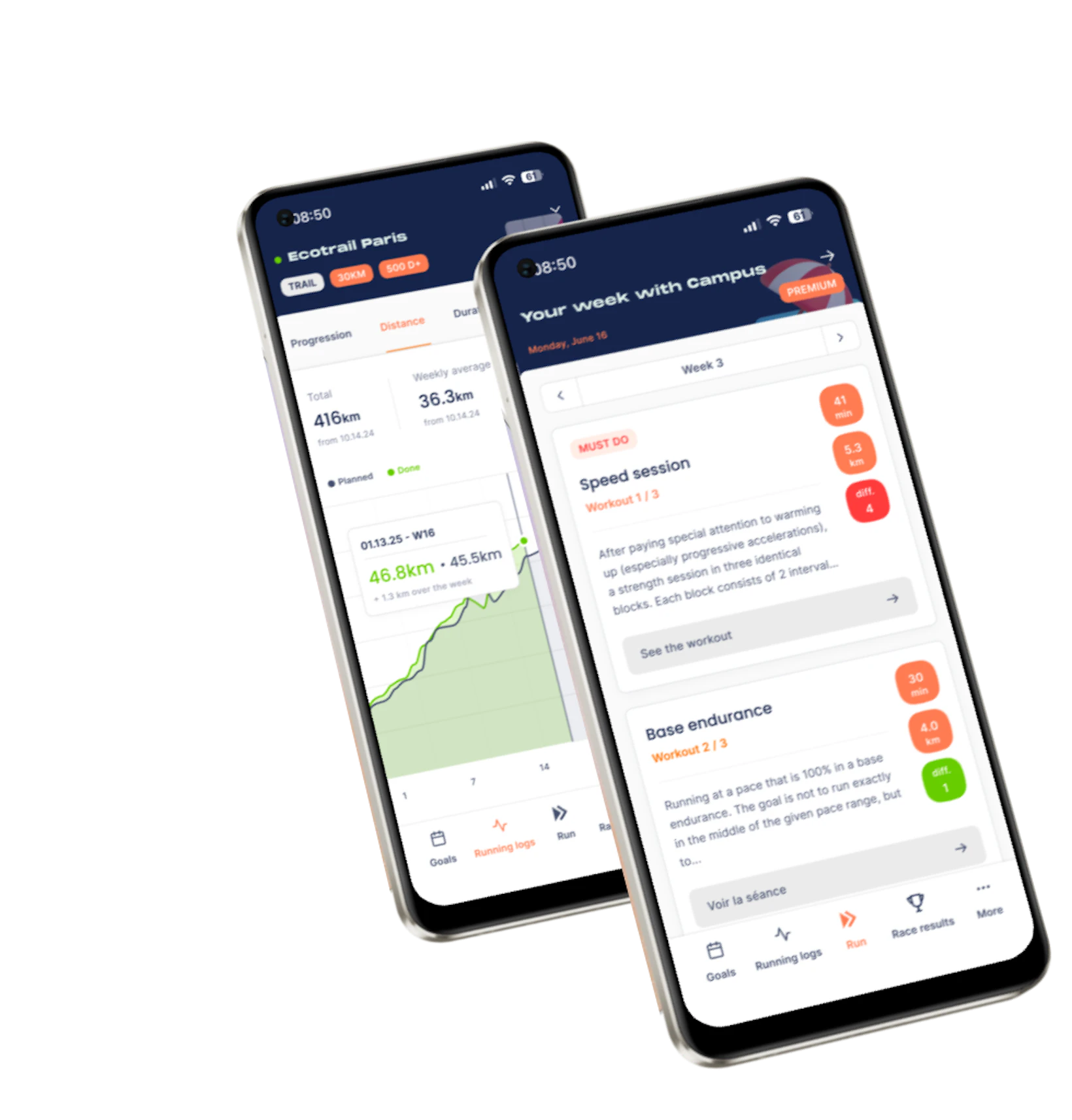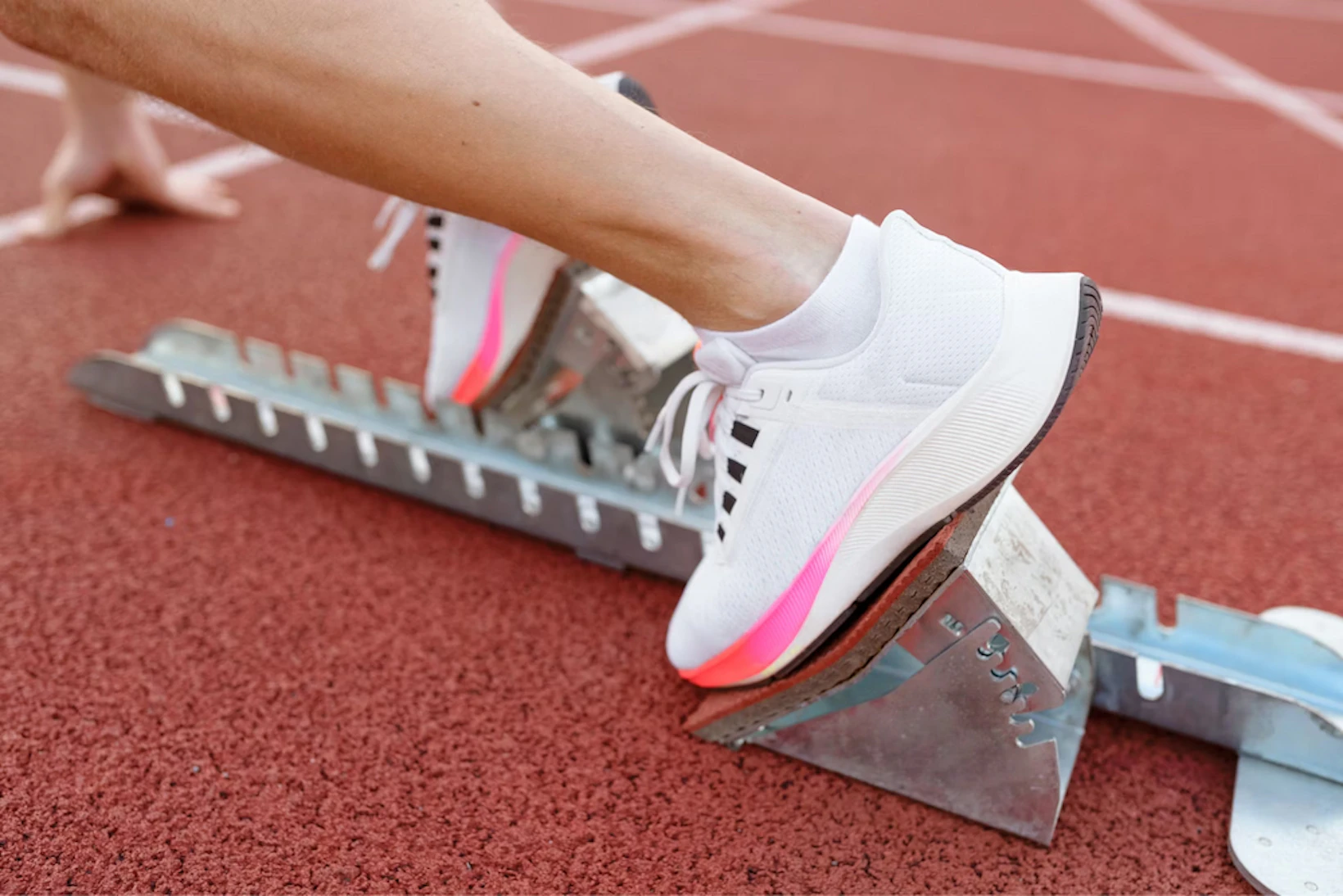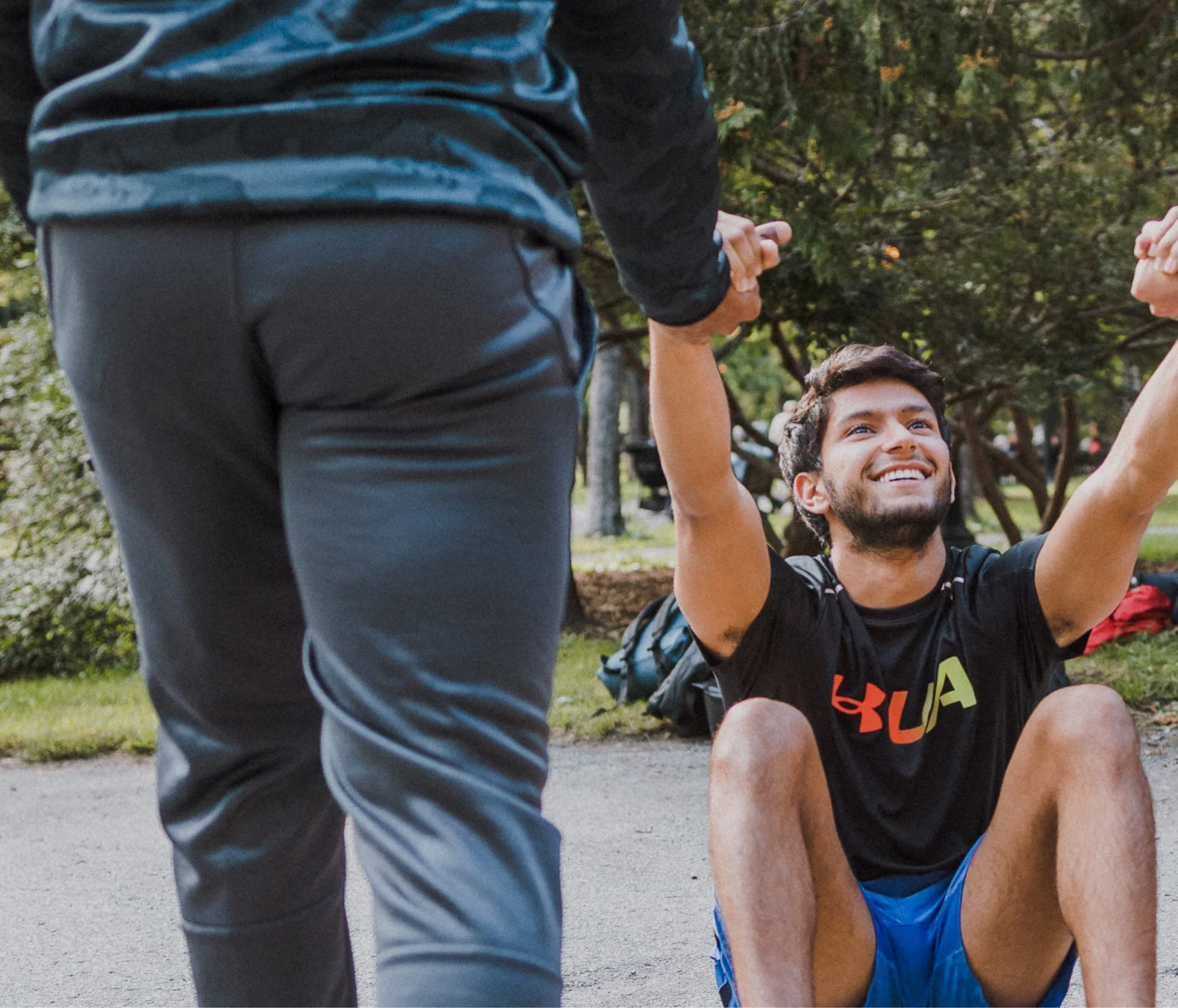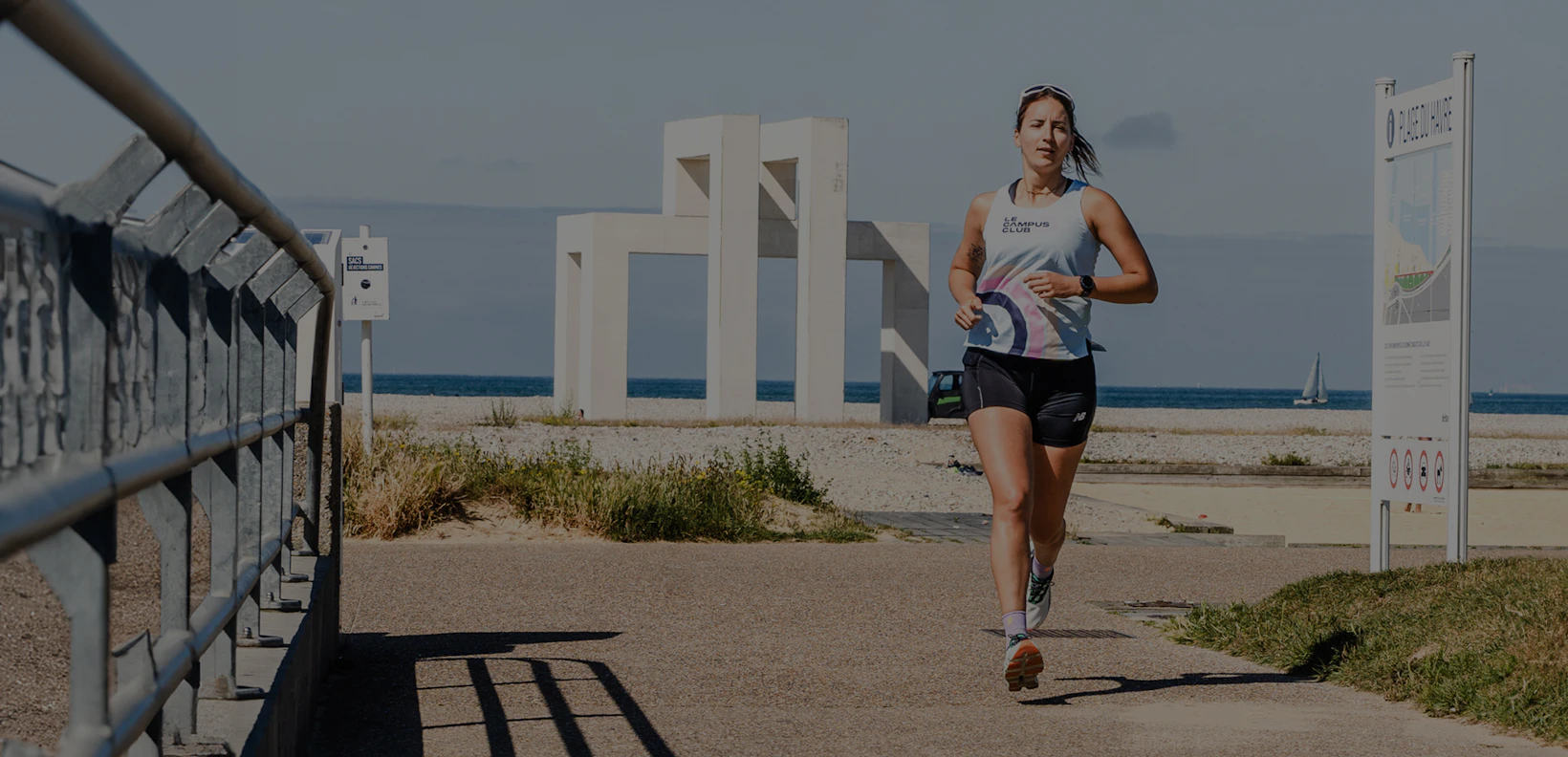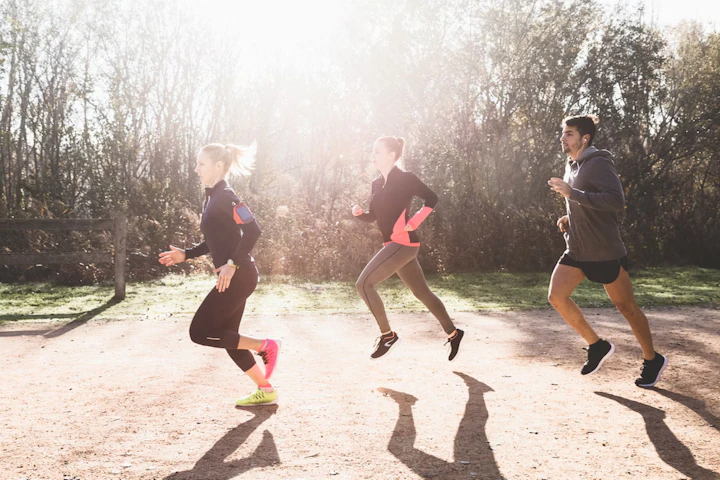What is MAS and how to analyze it properly?

13 min read
Summary
What is MAS?
Definition of MAS
What is the purpose of Maximal Aerobic Speed?
What is the relationship between MAS and VO2 Max?
Distances and percentage of MAS
What percentage of MAS for a 10 km?
What percentage of MAS for a half-marathon?
What percentage of MAS for a marathon?
How to calculate your MAS?
Vameval, Luc Léger... How to perform a MAS test?
The half-Cooper
How to improve your MAS?
Short MAS, Medium MAS, Long MAS. Different MAS workouts.
Which sessions are the most effective for increasing your MAS?
How long to improve your MAS?
The limitations of MAS
Different values according to tests
Every runner is unique
Durability and endurance index
The philosophy of Campus

Receive advice from our passionate coaches!
The famous MAS. Since the beginning of the 1980s, the maximum speed has appeared as a standard for many athletes and trainers.
This is especially the case in France, where there is a strong focus on developing MAS, whereas in other countries, other essential qualities in endurance runners are emphasized.
Can a performance level be predicted from MAS? How to calculate it? In which cases is it worthwhile to improve this speed? What are the benefits and limits of MAS? If you want to know everything (or almost) about MAS, it's here!
What is MAS?
Definition of MAS
The maximum aerobic speed is the smallest speed at which you reach your maximum'oxygen consumption ... on a given test. Accuracy is important. Indeed, the value obtained for MAS varies depending on the test performed.
During an aerobic effort, you take in oxygen from the air through your lungs. Then your blood transports this oxygen to your muscles and you use it to produce energy. The greater this capacity to transport and extract oxygen, the more efficient you will be on this type of effort.
During a graded exercise test, the amount of oxygen consumed by your body reaches a maximum at a certain level of intensity. This speed is the maximal aerobic speed. Even when running faster, your oxygen consumption will never exceed this plateau. The additional energy will then be supplied by the anaerobic pathway, that is, without the direct use of oxygen.
The maintenance time of VMA, c'is the hard time during which you are able to run at VMA, varies enormously depending on individuals, between 4 minutes for beginners and up to'at 8 minutes for the best athletes of each other.
At Campus, our alternative definition of MAS is the speed you can maintain for about 5 minutes. To do this, we base it on your times achieved in competition over various distances.
You thus understand that MAS is not a physiological speed per se, but rather an important marker to observe and analyze.
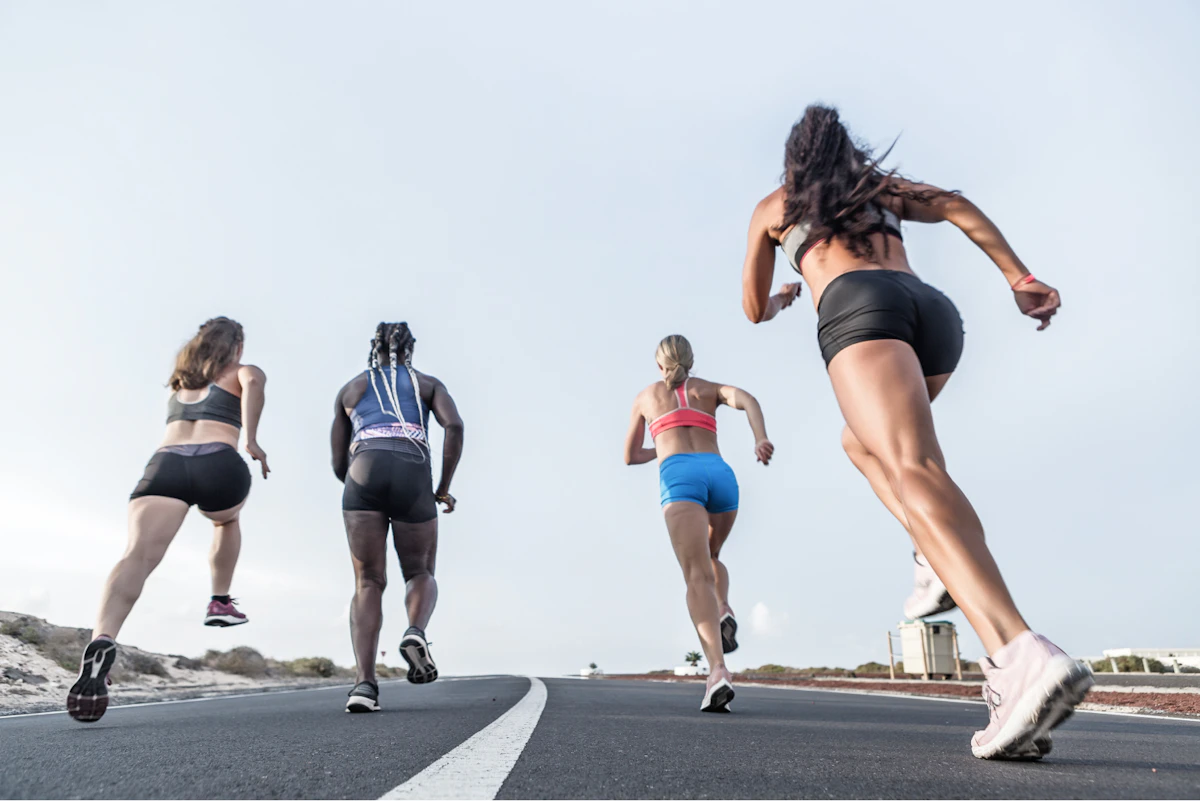
What is the purpose of Maximal Aerobic Speed?
MAS is an important factor in running performance. It reflects your maximum potential by combining your ability to consume a lot of O2 and your movement efficiency at this intensity.
It's important to strive to improve your maximum oxygen consumption in training, especially during your first years of running, because this will elevate the entire aerobic process, thus raising your ceiling.
Among many coaches, MAS is a kind of standard bearer. It allows training paces to be defined. This is not Campus's approach; we'll come back to it a little later.
What is the relationship between MAS and VO2 Max?
It's important to understand that your MAS is not solely related to your VO2 Max. When the latter stagnates, you can still work on the energy cost to improve your MAS.
VO2 Max is the maximum volume of oxygen that you can capture from the air and utilize. It can be compared to the engine displacement of your aerobic engine. It's a good indicator of your physical condition. It is generally around 30 to 40 mL/min/kg in sedentary adults, while the world's best athletes exceed 90 mL/min/kg.
VO2 Max is measured during a laboratory test using a mask to measure gas exchanges. The VO2 Max values given by some watches are unreliable because they are based on algorithms.
We are not all equal at birth concerning VO2 Max. Fortunately, training allows this value to be improved to a certain degree.
MAS is equal to VO2 Max divided by the energy cost. The energy cost is the amount of energy you consume per unit of distance traveled. We also refer to it as running economy.
Training can lower this energy cost and increase your MAS at a constant VO2 Max.
Distances and percentage of MAS
Whatever the prepared distance, from 5 km to the marathon, MAS is a reliable indicator of your maximum potential over that distance. But be careful, the longer the distance, the more other performance factors become predominant.
In practice, you will be able to achieve respectable times over 5 km by primarily working on your MAS in training. On the other hand, you will fall short of your maximal potential on distances like the half-marathon or marathon if you neglect other performance factors, such as endurance, threshold workout, or running form.
What percentage of MAS for a 10 km?
Depending on one's level, a 10 km is generally run at between 85% and 90% of one's MAS, and up to 92% for the best-trained athletes.
What percentage of MAS for a half-marathon?
A half-marathon is generally run at between 75% and 85% of one's MAS, and close to 90% for elite runners.
What percentage of MAS for a marathon?
The range is much broader for a marathon. A beginner could peak at 65% or 70% of their MAS if they have low endurance or muscle resistance. Elite runners can reach 85% of their MAS. This is the case with the legend Eliud Kipchoge, who ran at nearly 21 km/h during his marathon record (2h01'09'') for an estimated MAS of 24.5 km/h.

How to calculate your MAS?
You can determine your MAS by performing a cardio-respiratory test in a laboratory. In theory, this is the most accurate test as it directly measures gas exchanges using a mask. There are other less expensive methods. You can obtain an estimate of your MAS by performing a test on a track or road, provided the terrain is flat.
Vameval, Luc Léger... How to perform a MAS test?
The Vameval and Luc-Léger tests consist of running progressively faster in stages until reaching one's MAS. They require a little equipment and organization.
The Vameval test is done on an athletics track, with markers placed every 20 meters. A soundtrack sends regular audio signals. At each of these signals, you must reach a marker. The test starts at 8 km/h and you accelerate by 0.5 km/h every minute. The test stops when you fail to reach the next marker. Your MAS is the last validated stage.
The Luc-Léger test is also a test conducted in progressive stages. It involves making increasingly faster shuttles over a distance of 20 meters while following audio signals. The speed increases by 0.5 km/h every minute. The Léger-Boucher test is a variant. This time the cones are spaced 50 meters apart, and the speed increases by 1 km/h every two minutes.
The half-Cooper
Easier to implement, the half-Cooper test involves covering the greatest possible distance in six minutes, ideally around an athletics track. Once the test is done, calculating the MAS is simple. You just divide the distance by 100. For example, if you covered 1,500 meters in 6 minutes, your MAS is 1,500 / 100 = 15 km/h.
The half-Cooper test is not always reliable, especially for beginners. Indeed, this test requires good self-awareness to smooth out effort and maintain a steady pace for six minutes. A start too fast or too slow will have a strong impact on the test result. However, compared to Vameval or Luc-Léger, the half-Cooper directly links duration of maintenance and MAS. In fact, the structure of training primarily depends on the maintenance duration being worked on. That's why it is essential to pair the Vameval or Luc-Léger with a second time-limit test.
How to improve your MAS?
Interval training sessions are essential if you want to develop your maximal aerobic speed. The main interest of interval training is being able to sustain an intense effort longer than during a continuous MAS effort.
On average, a person can run for 6 minutes at their MAS. Thanks to interval training, it's possible to easily double this support time.
Short MAS, Medium MAS, Long MAS. Different MAS workouts.
MAS training sessions can be divided into three categories based on the length of fast intervals: Short MAS, Medium MAS, and Long MAS. For all these workouts, the goal is to run long enough at at least 90% of VO2 Max.
Short MAS sessions include intervals of 30 seconds to 1 minute 15, run between 100% and 105% of one's MAS. The recovery between intervals is equal to or slightly less than the duration of the effort.
Medium MAS workouts include intervals between 1 minute 15 and 2 minutes, run between 95% and 100% of their MAS. The recovery is between the time of effort and half the time of effort. The shorter the recovery (pinched), the more difficult the workout, thus the lower the % of MAS will be.
Long MAS workouts include intervals longer than 2 minutes, run between 92% and 95% of their MAS. The recovery corresponds to half the time of effort. At this level of intensity, you are almost at a 5 km pace. If you maintain this intensity long enough, you'll tend towards your VO2 Max.
Which sessions are the most effective for increasing your MAS?
There is a concept of VO2 Max kinetics, meaning it takes some time to reach a high percentage of VO2 Max. That’s why very short intervals like 30/30 are not the most effective for obtaining significant support time and improving VO2 Max.
Various studies indicate that the most effective workouts for stressing the VO2 Max and causing the largest adaptations are those with long MAS intervals. For example, we talk about workouts of 4 x 4 minutes at 95% of MAS with 3 minutes of active recovery, for a total duration of 25 minutes.
These workouts are very demanding. It is necessary to maintain good progression before being able to perform them.
Coach's examples:
This can include workouts with descending duration intervals. Example: start with a 3' at 100% (very hard), then do 1-minute intervals, and finally 30” intervals. Once kinetics are underway, it kicks back very quickly, even independently of rest duration in the second half of the workout.
How long to improve your MAS?
To see significant progress, it’s recommended you dedicate at least a 2-month development cycle to your MAS, with one or even two workouts per week if you’re already experienced. A 3-month cycle will generate even more progress.
Planning this MAS cycle should take into account the race you’re preparing for. It can be included in the preparation of a 5km or 10km. However, this cycle will be much further from your target if you’re preparing for a half-marathon or especially a marathon.
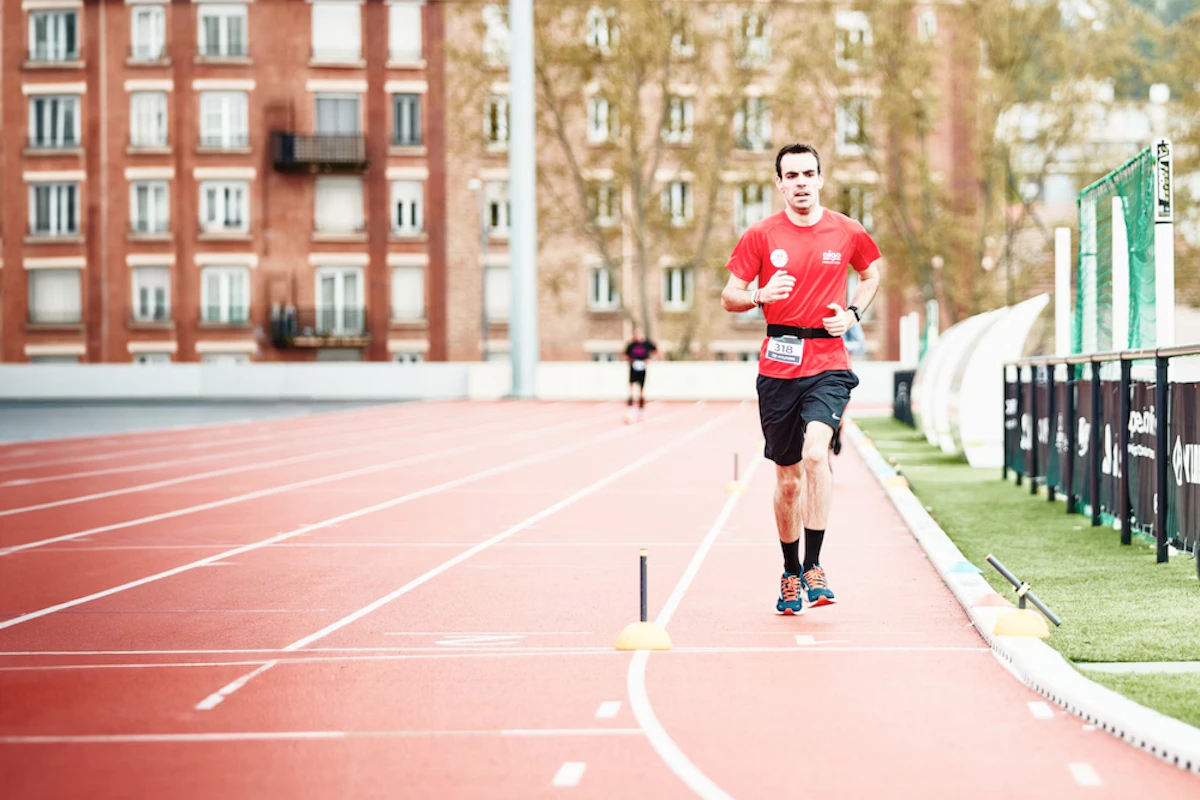
The limitations of MAS
Different values according to tests
As we have seen previously, several tests allow you to evaluate your MAS. However, there is a good chance that each type of test will produce a different MAS result. This is a primary limitation.
Next, a MAS result is only valuable if it is accompanied by a support time at that speed. Imagine two runners who achieved a MAS of 18 km/h after a Vameval test. If the first can maintain this speed for 3 minutes and the second for 6 minutes, their performances will be very different in competition.
Then, your MAS evolves over a season. A MAS test done at the resumption of training in September will likely be obsolete by spring. The differences are particularly marked in beginners. At Campus, we prefer to improve your paces and reindex them based on your progress in competition over longer distances.
Every runner is unique
Every individual is unique. Limiting factors will differ from one runner to another. If your aerobic power is good, there's little benefit in multiplying interval workouts to improve your MAS. ∗Unless it is specific to the race you are preparing for (cf a 5km vs. 42km training). On the contrary, you will benefit from strengthening your potential weaknesses, such as strength, endurance, endurance, or improving the efficiency of your stride. Conversely, if you are very enduring and resilient but your MAS is too low, you will benefit from scheduling a training cycle to raise your aerobic ceiling.
Sometimes the level of thresholds or race paces is expressed as a percentage of MAS. Again, disparities can be significant. For some, the lactate threshold level corresponds to 80% of their MAS. For others, it may be 70%. As a result, a session conducted at 80% MAS will be much harder for the second category because they will produce more lactates at that intensity.
Similarly, an 85% MAS pace might correspond to a seasoned athlete's half-marathon pace or another's 10K pace. Consequently, the perceived difficulty of the same workout will differ. That's why it's essential to adapt workouts according to two profiles.
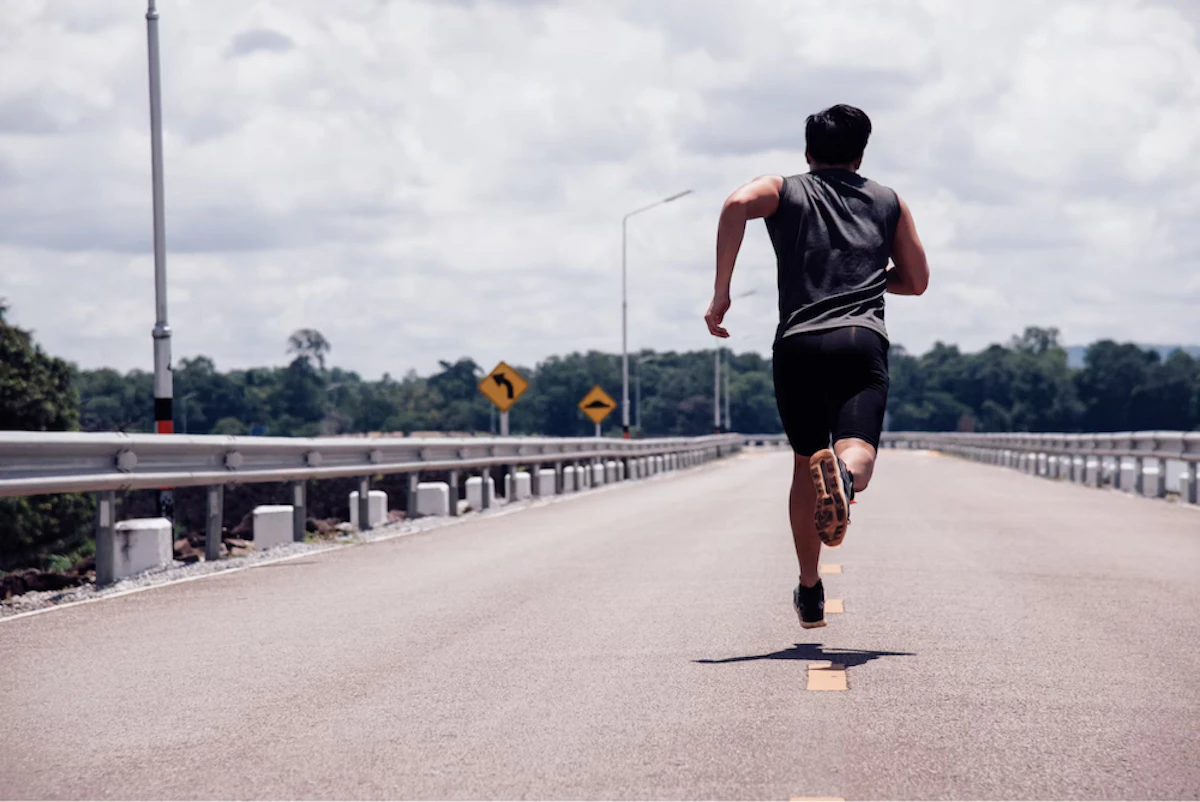
Durability and endurance index
Your MAS alone cannot predict your future times.
In reality, endurance performance can be viewed through three axes: VO2 Max, thresholds, and durability. These three factors help establish your athlete profile. It can be observed if you perform better over shorter distances than longer ones, or vice versa. Then, your training will be adapted according to your profile and goal.
This is where the concept of endurance index comes into play, which is linked to durability. This index measures your ability to maintain a percentage of your MAS over a certain period. The longer the distance, the more important the durability factor in performance.
We calculate your endurance index from your maximum performance over several distances. A minimum of two performances is required to calculate it.
The formula is as follows: Endurance index = (% of MAS maintained during the race – 100) / ln (race time in minutes / 6)
The result of the endurance index is always negative. The better your durability, the closer the result will be to 0.
You can tap into several levers to develop your durability and become more efficient on long distances: training volume, long runs, work under fatigue.
The philosophy of Campus
Campus will not ask for your MAS to establish your training plan. As mentioned earlier, our approach is based on maintenance times, calculated from times achieved in competition. For the MAS, we calculate your maximum speed over 5 minutes. If you don't have a reference time when registering on Campus, don't worry, we'll offer you a 1500m test to assess these maintenance times. In the same logic, we use the threshold 60 (a pace you can maintain for about an hour) or the threshold 30.
You can use the pace calculator from Campus to find an estimate of your future time based on the duration of the chosen plan.




